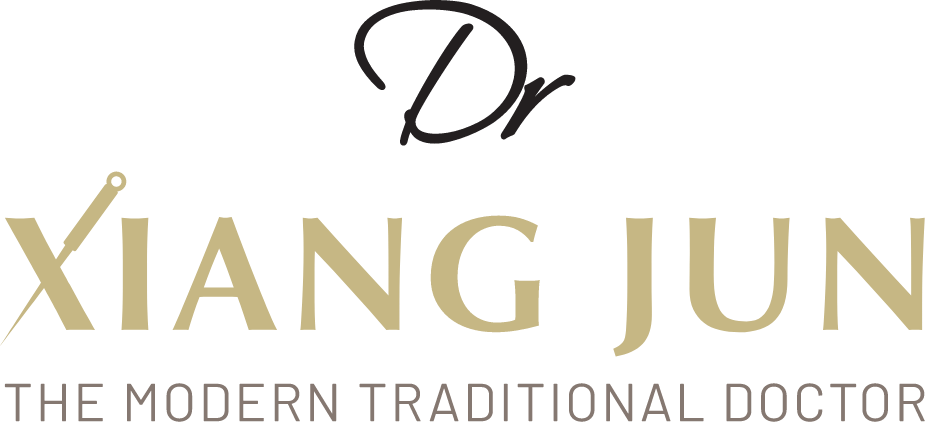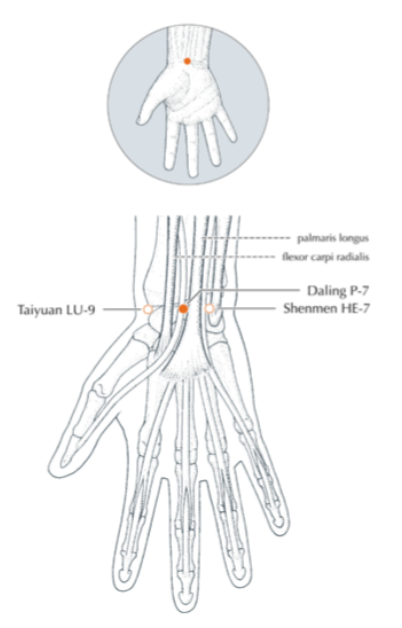Acupuncture for Vagus Nerve Stimulation
What is Vagus Nerve
Within the body, there is the autonomic nervous system that consists of the sympathetic and parasympathetic nervous systems. The autonomic nervous system controls the involuntary body functions and activities, meaning that the functions do not require conscious effort and control to operate.
The parasympathetic nervous system controls “rest-and-digest” functions, while the sympathetic nervous system operates the “fight-or-flight response”.
The vagus nerve are the nerves that mainly constitute the parasympathetic nervous system. The vagus nerve originates in the brainstem and travels to innervating organs from the neck, thorax, and abdomen, reaching to the colon. The heart, lung, stomach, pancreas, small intestines, half of the large intestines, and liver are all innervated by the vagus nerve.
The vagus nerve controls involuntary sensory and motor or movement functions of the body which requires no consciousness to operate such as mucus and saliva production, skin and muscle sensations, speech, taste, urine output. Along with these countless functions, the vagus nerve influences blood glucose levels, digestion, emotional responses, neurotransmitter release, B12 absorption and activation, heart rate variability and even orgasms. Digestive and metabolic hormones, sex hormones and growth factors also require vagus nerve stimulation to work.
Therefore it can be seen that the source of many illnesses and disorders such as leaky gut, irritable bowel syndrome, gastroesophageal reflux disease, brain fog, microbiome imbalance, chronic pain and inflammation, unusual heart rate, abnormal blood pressure, emotional stress and mental health issues, exhaustion related to overwork or overtraining and even poor posture are related to vagus nerve imbalance.
How Acupuncture Heals through its relations to Vagus Nerve
According to the principles of Traditional Chinese Medicine, stimulation at an acupuncture point or acupoint restores and refurbishes the flow of qi or energy along the meridians or energy channels that links the organs in different parts of the body.
However, the biological basis for how acupuncture stimulation can affect and even reverse the pathogenesis of internal organs are still not fully understood.
Nonetheless, as mentioned in one of my past blog posts on How TCM works scientifically, the mechanisms of acupuncture can be simplified from various scientific studies as aiding the body in promoting blood flow, reducing inflammation, relieving pain and restoring homeostasis. As most if not all illnesses involve a certain degree of inflammation, pain and imbalance, acupuncture heal through these 3 pathways in general.
Acupuncture Counters Stress and Encourages Rest
Among several biological correlates that may explain the principle of acupuncture, the autonomic nervous system is frequently considered to be a mediator of acupuncture stimulation. This is because it can interconnect external somatosensory inputs with internal organ responses via the central neural networks. Through the perspectives of science and Western medicine, the push-pull dynamics between the parasympathetic ("rest and digest") branch and the sympathetic ("fight or flight") branch can be viewed as a type of yin-yang interaction within our autonomic nervous system.
Of the sympathetic and the parasympathetic nerves comprising the autonomic nervous system, the vagus nerve, which broadly regulates the functions of internal organs, has been a primary target for exploring the possible effect of cutaneous acupuncture stimulation on internal organs. Notably, vagus nerve stimulation is a well-established way to activate the parasympathetic nervous system in ways that counteract the sympathetic fight-or-flight responses to stress. Such vagus nerve stimulation is achieved by acupuncture. This is the reason why acupuncture is known to help with stress management and calming of nerves which are two main factors for any healing to occur.
Read more about Acupuncture for Time Abundance here.
Acupuncture Reduces Inflammation
Inflammation plays a major role in many chronic and autoimmune diseases involving a complex reaction between proinflammatory cytokines, chemokines, neuro-mediators, and other signaling molecules initiating and perpetuating the inflammatory reaction. Chronic inflammation adds to tissue damage, oxidative stress, and increased morbidity and mortality. It can therefore be seen that anything that can counter inflammation is the key to recovery of illnesses and diseases.
With the activation of the parasympathetic nervous system pathways for ‘rest-and-digest’, acupuncture brings about systemic anti-inflammatory effects on the body through vagus nerve stimulation. This is supported by various papers that found that acupuncture stimulation can stimulate the vagal-adrenal axis that alleviate systemic inflammation. Another paper reveals that vagus nerve stimulation tames inflammatory responses and lessens rheumatoid arthritis symptoms. Another study found that acupuncture can significantly modulate pro-inflammatory cytokines, dampening the inflammation response via the cholinergic anti-inflammatory pathway.
How to stimulate Vagus Nerve with acupuncture
So the next question now is how can we bring about vagus nerve stimulation with acupuncture?
This will involve knowing which acupoints, how deep to go, how strong the intensity it needs to be for any acupuncture stimulation in the treatment of any illnesses. The knowledge of these will hence involve the skills, experience and techniques of the acupuncturist or Traditional Chinese Medicine doctor.
Nonetheless, I will be sharing some acupoints that you can apply with acupressure and qigong exercise that can bring about vagus nerve stimulation for stress relief in daily life. Having said that, it is always recommended to go to a professional Traditional Chinese Medicine doctor for proper extensive acupuncture stimulation of the vagus nerve for full beneficial effect in stress relief, treatment of illnesses and rebalancing.
Acupressure point for Vagus Nerve stimulation
Daling P7
Location: In the middle of the wrist crease between the tendons of palmaris longus and flexor carpi radialis.
Technique: Mild pressure for 15 to 30 seconds. Alternate on both hands.
Benefits: Promotes feeling of safety and connection
Yintang M-HN-3
Location: At the forehead, in between the eyebrows
Technique: mild pressure for 15 to 30 seconds. Or tap for 15 to 30 seconds
Benefits: calms mind
Read more about Yin Tang Acupoint here.
Qigong Exercise for Vagus Nerve Stimulation
Practice when when you want to shift your body into a more relaxed state. It uses eye movement to engage sub occipital muscles at the base of the skull where the vagus nerve passes through, drawing the first two vertebra into alignment.
• Lie on your back
• Gently interlock your fingers and cradle your head in your hands so that the back of your head is resting in your palms
• Face forward, looking at ceiling or sky if laying down. Your hands, arms and head will stay in the same position throughout the exercise
• Moving your eyeballs only, look to the right for 30-60 secs. You will know when to return eyes to center when you feel a shift in breathing, a yawn, or other sensation of relaxation, release, or calm. This may be subtle.
• Repeat, moving eyeballs only, looking to the left
• Relax, gently observe your breath, and rest in a comfortable position.
Repeat if desired. You can practice this anytime.
Further Reading:
Everything you need to know about Acupuncture
Natural Alternatives or Chemical Drugs?
Why Emotional Release is Important
Are you ashamed of having menses?
What should you not do before Acupuncture?
Testimonial for Digestive Health Bloatedness
Testimonial for Chronic Fatigue
Adrenal Fatigue and How It Can Be Treated
Is Chocolate Really Good as a Positive Emotional Builder?
How Acupuncture Help with Fatigue
Facial Acupuncture - How to differentiate the real deal from the fakers
Women’s Health: It is not normal to have cysts and fibroids
Men’s Health: Signs of Male Menopause




